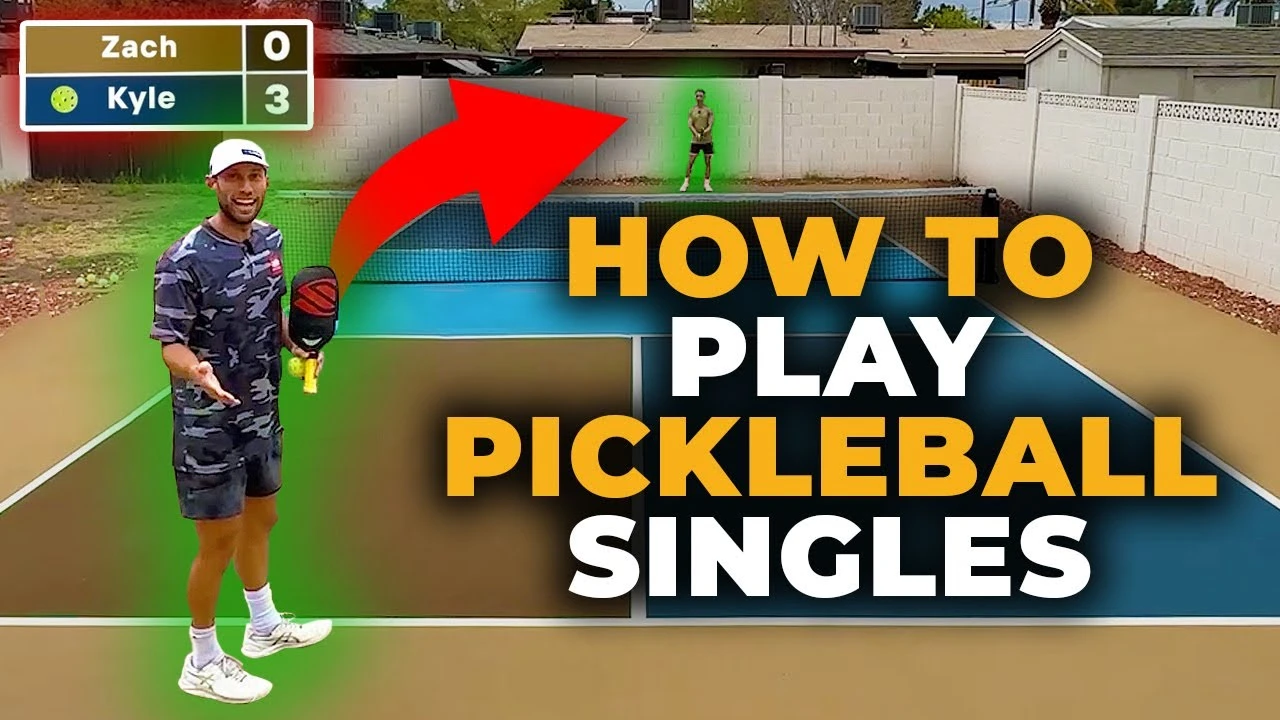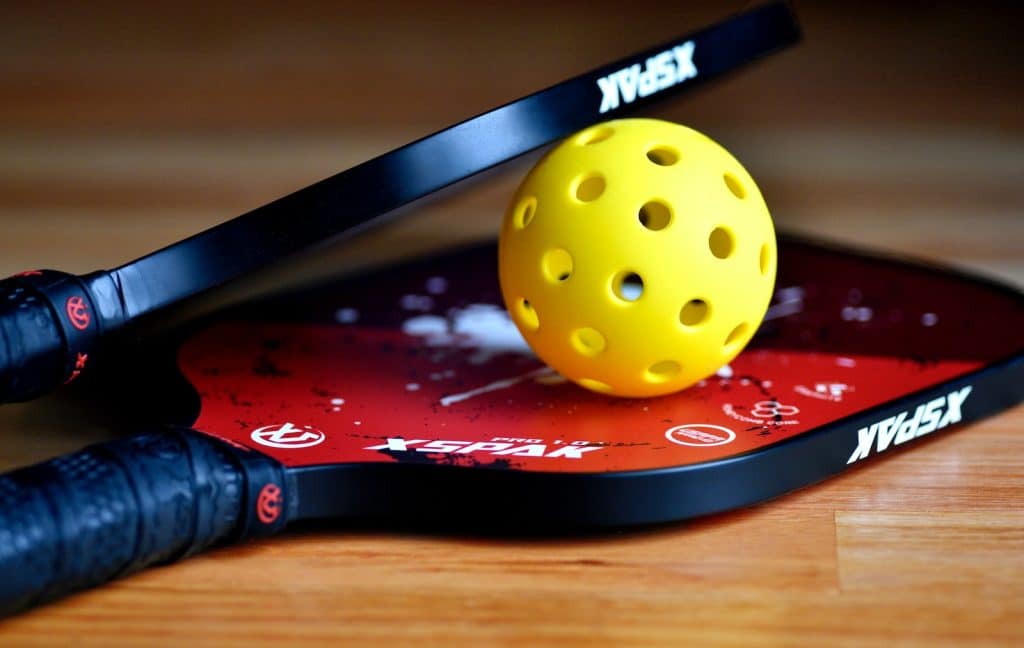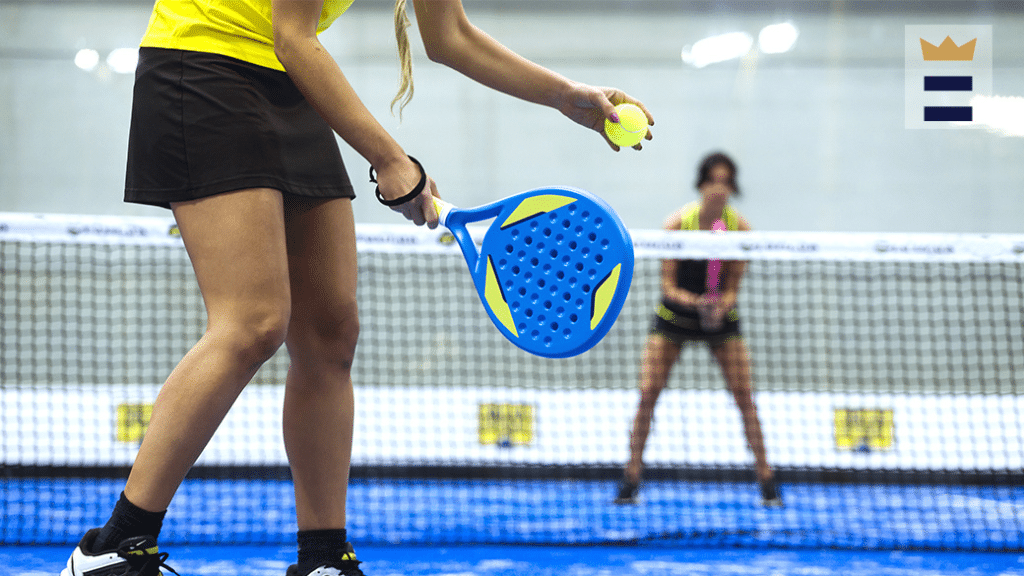While pickleball is often played in doubles, it’s also important to understand how to play it as singles when the occasion arises.
Pickleball singles is a bit more challenging because you’re on your own covering the court. However, it can be a lot of fun and can help you improve your overall pickleball skills.
In this article, we’ll explore the rules for pickleball singles, highlighting the key differences from doubles. We’ll also provide some useful tips to enhance your performance in this exciting variation.
Table of Contents
Overview of Singles Pickleball
Singles pickleball is played on a standard pickleball court with the net set at 36 inches, just like in doubles play. The basic rules of pickleball also apply to singles in regards to serving, scoring, double bounces, and faults.
The main difference is that there is only one player on each side of the net instead of two. This means you’ll need to cover the entire pickleball court by yourself!
Singles pickleball can be a demanding yet rewarding game. With no partners, success rests entirely on your own skills and fitness. Points unfold rapidly, requiring quick footwork and reflexes. Winning singles play requires mastering power serving, returns, volleys, lobs, dinks – all the pickleball toolkit.
Let’s look at the specific rules and formats that make singles pickleball unique from doubles play.
What is Skinny Singles Pickleball?
Skinny singles pickleball is a variation that makes covering the court less tiring. The playable area is split cross-court, with each player covering only the diagonal service box on their side. This allows practicing serves, returns, and volleys without as much running. Since the court is condensed, players can also drill groundstrokes and dinks. Skinny singles help develop fundamentals that transfer to conventional singles.
This shrinks the space each player must defend. Skinny singles feels more like doubles, as you’re only accountable for half the court on each point. It’s commonly played recreationally and for drills.
The serving sequence and scoring remain the same as conventional singles pickleball – which we’ll cover next.
Official Pickleball Rules for Singles
While founded as a doubles game, many official pickleball rules apply identically to singles play, including:
- The court size – 20×44 feet for both singles and doubles pickleball.
- The pickleball net height – 36 inches at center for singles or doubles.
- Service sequence – The first team to serve is decided by a coin toss in singles and doubles.
- Two bounce rule – The ball must be hit by the receiving team before it bounces twice.
- Non-volley zone – Also called the “kitchen,” 7 feet from the net is out of bounds for volleys.
- Line calls – A ball contacting any line is considered “in” in both formats.
However, there are some important rule differences between singles and doubles pickleball to understand before playing:
Serving Rules
- In doubles, each side has 2 serve attempts to get the ball in play. In singles pickleball, there is only 1 serve attempt per side to start play.
- The server must serve diagonally, starting from the right-hand side court in both singles and doubles play.
- In doubles, the serving team has 2 players who alternate serves. In singles pickleball, the same player serves until they fault or the opponent scores.
- The server must call out the score loudly before serving, saying their score first and then the receiver’s score.
- Servers should take care not to foot fault by touching the baseline or court during the service motion.
- The serve must be an underhand stroke started below the waist.
Scoring Rules
- Doubles pickleball scoring involves 3 numbers – the server’s score, partner’s score, and receiver’s score. Singles pickleball only uses 2 numbers – the server’s score and receiver’s score.
- The winning score is 11 in singles and doubles (win by 2 points).
- As in doubles, only the serving team can score points in singles pickleball. The receiver must win the rally to gain service.
- When the serving player faults, there is a “side out” and the opponent begins serving in both singles and doubles. No serve transitions between partners in singles.
How to Play Singles Pickleball
Now let’s get on the court to apply these rules in actual singles pickleball play:
Serving in Singles
- To start, the first serving team is decided by a coin flip or spin. The starting server gets one attempt to successfully put the ball in play from the right-hand court.
- The server must call out the score before serving. This will be two numbers – the server’s score, then the receiver’s score starting at “0-0.”
- The ball must be served diagonally to the opposite diagonal court where the opponent is waiting to return serve.
- If the serve attempt goes into the net or out of bounds, this is a fault. The ball immediately goes to the opponent and switches sides.
- When the server wins the point, the server’s score is increased by 1, but the server stays on the same side until a fault occurs.
- When the server loses the rally, there is a “side out” called and the opponent begins serving from the correct side based on the score.
Returning in Singles
- The singles pickleball returner should move back deep in the court to handle the serve. Take the return early and hit deep into the opponent’s court to seize control of the point.
- Poach across the middle to get to balls hit to your weaker side. Keep your eye on the ball and react quickly on the return.
- Look to hit aggressive shots – like down-the-line topspin forehands – as often as possible to pressure your opponent.
Scoring and Serving Sides
As mentioned, only the serving team can score points in pickleball. So when you are the receiver, you must win the rally to gain the serve back.
To determine the correct serving side, follow these pickleball rules:
- If the server score is even (0, 2, 4, etc), serve from the right-hand court.
- If the server score is odd (1, 3, 5, etc), serve from the left-hand court.
- If the receiver’s score is even, the serve goes to their right-hand court. If odd, it goes to their left court.
This sequence stays consistent throughout the singles game. Track the score carefully, especially when games go deep and enter higher numbers.
Common Beginner Faults
As a beginner, watch out for these common faults that will lose the rally:
- Serving into the non-volley zone.
- Volleying from the non-volley zone before bounce.
- Double bouncing the ball before hitting.
- Hitting the serve out of bounds.
Avoid these mistakes, and keep proper track of the score and service boxes.
Singles Pickleball Strategies and Tips
Mastering smart singles play requires strategies like:
Serve Deep
Use a big windup and full power on serves. Aim down the sidelines or go wide crosscourt to the backhand. Force your opponent deep and off balance.
Control the Non-Volley Zone
In singles, the first player to command the kitchen gains a huge edge. Rush in to cut off angles. Be ready to smash or drop volleys away for winners.
Hit Angles
Aim passes down the sideline when pulled wide. Go behind your opponent crosscourt to expose the open court. Keep them guessing.
Take Risks
Singles rewards calculated risks and aggressive shot-making. Don’t be afraid to gamble occasionally to disrupt your opponent’s rhythm.
With these tactics, you’ll gain an advantage over any singles opponent!
Playing Singles vs. Doubles
While both fun formats, here are some key differences between singles and doubles pickleball:
- Singles is more physically demanding, as you cover the whole court alone. Doubles allows each player to defend half the court.
- Singles requires more well-rounded skills and endurance. Doubles emphasizes teamwork and communication between partners.
- The serve and return carry more weight in singles. The longer transition game is more important in doubles.
- In doubles, the first server has an exception if they lose the point. Server identification also differs from singles.
- Strategy and matchups differ greatly between the two game formats.
Getting Started with Singles Pickleball
The best way to learn singles pickleball is simple – get out on the court and play! Grab a friend and just start hitting. Keep the rules handy as a guide. But with every match, your skills and understanding will grow.
Stay positive, keep track of the score carefully, and have fun with the 1-on-1 competition that singles pickleball offers. Your game is sure to rapidly improve.
Now get on that court and show off your developing singles prowess!



